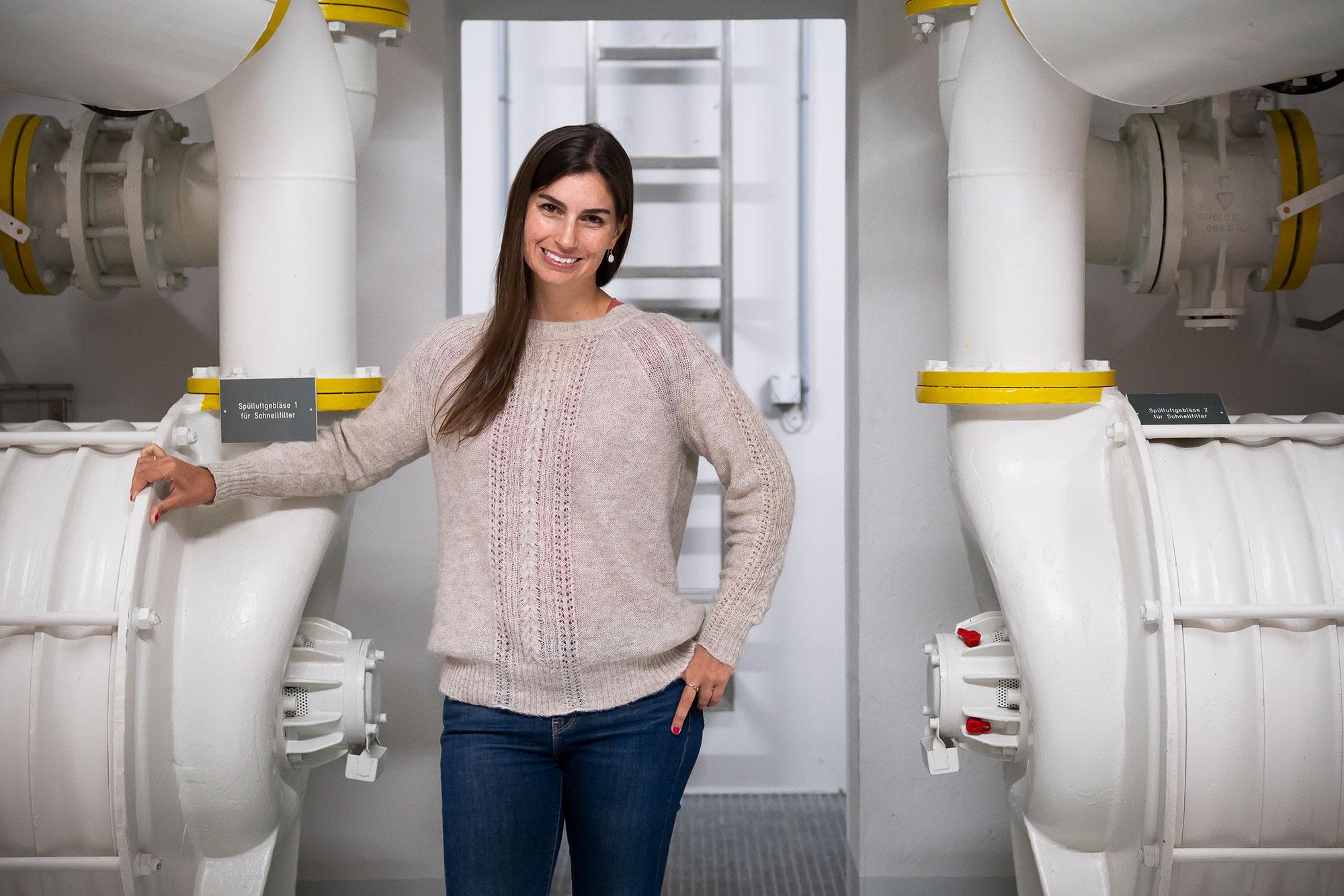Detecting microplastics in the environment

Geochemist Denise Mitrano has found a way to track how micro- and nanoplastic particles spread through the environment. For this work, she is receiving this year's Marie Heim-Vögtlin Prize from the Swiss National Science Foundation.
Man-made plastic pollutes the environment. When broken down into micro- and nanoparticles, it poses an increasing problem not only for the oceans and their inhabitants, but also for lakes, rivers and soils. For a long time, it was barely possible to track these particles, which are as small as a few millionths of a millimetre in size. Denise Mitrano, a geochemist at ETH Zurich, has now succeeded in doing this: she has developed a method to track micro- and nanoplastics in water, soil and even organisms. For this achievement, she has been awarded this year's Marie Heim-Vögtlin Prize by the Swiss National Science Foundation (SNSF). The ceremony will take place at the event "Building hope for the future – Celebrating progress in sustainability" in Zurich on 14 December 2021.
Denise Mitrano is the 13th winner of the prize. She sees the award as valuable recognition of her work to date and as motivation to continue in the same vein: "I know from my own experience how inspiring female role models can be, so I'm now all the more happy to become a role model myself. For women to have equal opportunities in the sciences is important to me personally." It is also a key concern of the SNSF, which awards the MHV Prize, worth 25,000 francs, annually to an outstanding young woman researcher.
Plastic on the move - in water, soil and plants
Originally, Mitrano was not interested in plastics but in engineered metal nanoparticles, such as those found in textiles and cosmetics, as well as how natural metal nanoparticles behave in the environment. Her breakthrough idea was to transfer the methods used to measure such nano-metals to plastic particles. To this end, she developed a process for chemically adding metals to plastic particles. The advantage of this is that metals can be measured with much more sensitive methods than plastics – and also much faster. (*1). This work was financed by an Ambizione grant as part of the SNSF's efforts to promote young researchers.
In a replica of a small-scale sewage treatment plant, the chemist investigated what happens to plastic particles there (*2). She was able to show that this sewage treatment plant removes over 95 per cent of the micro- and nanoplastics from the water, accumulating them in the sewage sludge. "But that doesn't solve the problem of plastic pollution entirely," Mitrano explains. The reason: in many countries, sewage sludge is used as fertiliser for agricultural soils, which means that the plastic particles end up back in the environment.
Microplastics in politics
In further experiments, the US-born scientist investigated what happens to microplastics in soils and plants. Among other things, she discovered that the particles are taken up by plants and trigger a stress reaction in them.
Mitrano is also involved at the interface of science and policy. She recently published an assessment of new definitions and regulations on microplastics from the European Chemicals Agency ECHA (*3). "The more we know about the pathways of plastic particles and their harmful effects, the better we can prevent plastic from entering the environment in the future," Mitrano believes.
Promoting young researchers
She also wants to promote young female researchers within her own research group, which she has been leading since 2020 as an assistant professor with an SNSF Eccellenza Fellowship. "Above all, I want to encourage young women to be confident in pursuing their own ideas and not to be too put off by criticism and failure," says Denise Mitrano. "It takes courage, but it's worth it."
(*1) D.M. Mitrano et. al: Synthesis of metal-doped nanoplastics and their utility to investigate fate and behaviour in complex environmental systems. Nature Nanotechnology (2019).
DOI: https://doi.org/10.1038/s41565-
(*2) St. Frehland et. al: Long-term assessment of nanoplastic particle and microplastic fiber flux through a pilot wastewater treatment plant using metal-doped plastics. Water Research (2020).
DOI: https://doi.org/10.1016/j.watres.
(*3) D.M. Mitrano and W. Wohlleben: Microplastic regulation should be more precise to incentivize both innovation and environmental safety. Nature Communications (2020).
DOI: https://doi.org/10.1038/s41467-
Award for excellent female researchers
The SNSF awards the Marie Heim-Vögtlin (MHV) Prize each year to an outstanding woman researcher. The prizewinners are inspiring role models who achieved impressive results during their period of funding and made major advances in their careers. Since 2020, the MHV Prize has been awarded to a former female grantee of the MHV, Doc.CH, Postdoc.Mobility, Ambizione or PRIMA funding schemes.
The MHV grant was named after Marie Heim-Vögtlin, who became the first Swiss woman to study medicine when she was admitted to the University of Zurich’s medical faculty in 1868. On completing her studies, she opened a gynaecological practice, where she continued practising after giving birth to two children. She is regarded as one of the pioneers in the struggle to give women access to higher education.
- Image 1 (JPEG) for editorial use (horizontal): the chemist Denise Mitrano from ETH Zurich is awarded the Marie Heim-Vögtlin Prize 2021. © SNF/Cornelia Vinzens
- Image 2 (JPEG) for editorial use (vertical): the chemist Denise Mitrano from ETH Zurich is awarded the Marie Heim-Vögtlin Prize 2021. © SNF/Cornelia Vinzens
- Programme of award ceremony
- Video
- Project in the SNSF's research database P3